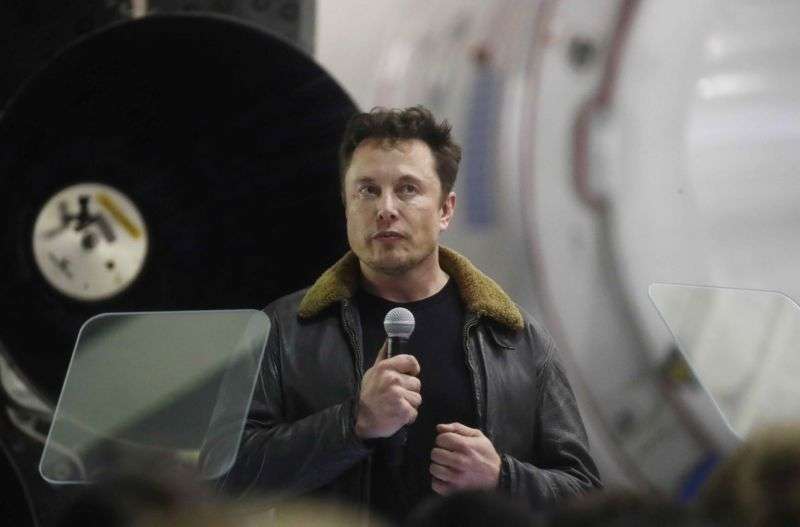
Elon Musk went on firing spree over slow satellite broadband progress

SpaceX CEO Elon Musk recently “fired at least seven” managers in order to speed up development and testing of satellites that could provide broadband around the world, Reuters reported today.
SpaceX has Federal Communications Commission approval to launch 4,425 low-Earth orbit satellites between 2019 and 2027 in a bid to compete against cable and fiber ISPs and to bring broadband to unserved and underserved areas. SpaceX is also seeking FCC approval of another 7,518 satellites. SpaceX’s “goal of having Internet service available in 2020 is ‘pretty much on target’ with an initial satellite launch by mid-2019,” one of Reuters’ sources said.
But Musk apparently concluded that keeping the Starlink project on schedule required a management shakeup. In June, Musk flew to the Seattle area for meetings with engineers who were leading the satellite project, Reuters reported:
Within hours of landing, Musk had fired at least seven members of the program’s senior management team at the Redmond, Washington, office, the culmination of disagreements over the pace at which the team was developing and testing its Starlink satellites, according to the two SpaceX employees with direct knowledge of the situation.
Known for pushing aggressive deadlines, Musk quickly brought in new managers from SpaceX headquarters in California to replace a number of the managers he fired. Their mandate: Launch SpaceX’s first batch of US-made satellites by the middle of next year, the sources said.
Musk wanted “cheaper, simpler satellites”
Among the fired employees were SpaceX VP of Satellites Rajeev Badyal and top designer Mark Krebs, Reuters wrote. “Rajeev wanted three more iterations of test satellites,” Reuters quoted one of its sources as saying. “Elon thinks we can do the job with cheaper and simpler satellites, sooner.”
Reuters described a culture clash between Musk and employees hired from Microsoft, “where workers were more accustomed to longer development schedules than Musk’s famously short deadlines.” Badyal is a former Microsoft employee, while Krebs previously worked for Google. “
The original version of Reuters’ story incorrectly claimed that another senior manager who previously worked for Microsoft left SpaceX. Reuters issued a correction to the story, and SpaceX confirmed to Ars that the employee still works for SpaceX.
Reuters wrote that SpaceX “is struggling to hire and retain staff” for the Starlink project, with about 300 SpaceX employees currently working on Starlink. In January 2015, Musk said the Redmond office responsible for the satellite project would have “several hundred people, maybe 1,000 people” within three or four years.
When contacted by Ars, SpaceX provided this statement:
The SpaceX Redmond office is an essential part of the company’s efforts to build a next-generation satellite network that can link the world with reliable and affordable broadband service, reaching those who have never been connected before. Given the success of our recent Starlink demonstration satellites, we have incorporated lessons learned and re-organized to allow for the next design iteration to be flown in short order. This is a very similar approach of rapid iteration in design and testing which led to the success of Falcon 1, Falcon 9, Falcon Heavy and Dragon.
SpaceX launched two demonstration satellites in February.
FCC to vote on another SpaceX request
SpaceX’s first round of satellites is planned to orbit at altitudes ranging from 1,110km to 1,325km, much lower than traditional broadband satellites. The existing HughesNet satellite network has an altitude of about 35,400km, making for a much longer round-trip time than ground-based networks.
As we’ve previously written, SpaceX has said it will offer speeds of up to a gigabit per second, with latencies between 25ms and 35ms. Those latencies would make SpaceX’s service comparable to cable and fiber. Today’s satellite broadband services use satellites in much higher orbits and thus have latencies of 600ms or more, according to Federal Communications Commission measurements.
In March, the FCC approved SpaceX’s plan to launch 4,425 satellites, with some conditions. The FCC approval requires SpaceX to launch 50 percent of the satellites by March 2024, and all of them by March 2027.
At its November 15 meeting, the FCC will vote on SpaceX’s request to use more frequency bands and to launch an additional 7,518 satellites. SpaceX has said this second cluster of satellites will orbit at even lower altitudes in order to boost capacity and reduce latency in heavily populated areas. The FCC proposal would require SpaceX to launch 50 percent of these satellites within six years and the rest within an additional three years.
The FCC has also approved requests from OneWeb, Space Norway, and Telesat to offer broadband in the US from low-Earth orbit satellites.




